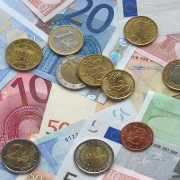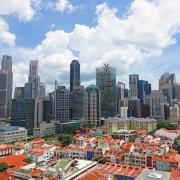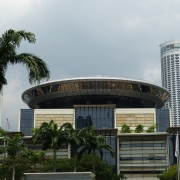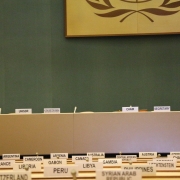What caused the economic miracle in Vietnam?
The post-unification Vietnam
After the prolonged military confrontation between the Vietnam and the French/Americans (Indochina Wars), the unified Vietnamese economy was relatively unstable. Due to strong government intervention, swift resource consolidation was achieved. Fast forward to the 21st century, Vietnam is recognised as one of the leading emerging economies.
Topic of Study [For H2 History Students]:
Paper 2: Economic Development after Independence
Section B: Essay Writing
Theme II Chapter 1: Paths to Economic Development
1976-1985: Post-unification Vietnam
The Second Five-Year Plan (1976-1980) focused on two major areas – agricultural development and industrialization. For the agriculture sector, the New Management System was established to facilitate large-scale collectivisation. For industry, the government held strong control over many private sectors.
Although there were setbacks to the Second Five-Year Plan, the government persisted, as observed by the Third Five-Year Plan (1981-1985). The latter focused on the policy of decentralisation, in which there was greater private economic participation. For example, peasants in the agriculture sector were allowed to sell their produce in the open market, thereby facilitating the development of a ‘family economy’.
1986-1996: ‘Doi Moi‘
In 1986, the Doi Moi (renovation) was introduced. In short, it focused economic liberalisation. One of the most significant policies involved the Foreign Investment Law (1987). This law allowed greater foreign ownership and provided greater incentives for export production. In 1990, the Vietnamese government set up four commercial banks.
In the agriculture sector, the government introduced Resolution 10, which involved the de-collectivisation of agriculture. The Land Law and Agricultural Land Use Law were introduced.
As a result, economic liberalisation contributed to the rapid economic growth in Vietnam. From 1992 to 1997, its Gross Domestic Product (GDP) rate was 8% per annum. By 1996, Vietnam received foreign direct investment (FDI) that was estimated at US$8.5 billion per year. Furthermore, Vietnam became the third largest exporter in the world.
What can we learn from this case study?
Consider the following question to understand this country-specific case study:
– How far do you agree that resource consolidation is the most important government strategy in developing the economy of Vietnam after 1975? [to be discussed in class]
Now that you have studied the government strategies that shaped the Vietnamese economy, it is imperative to review your knowledge application by writing essays. You can also sign up for our JC History Tuition. We provide condensed learning materials and essay outlines for references and revision.
The H2 and H1 History Tuition feature online discussion and writing practices to enhance your knowledge application skills. Get useful study notes and clarify your doubts on the subject with the tutor. You can also follow our Telegram Channel to get useful updates.
We have other JC tuition classes, such as JC Math Tuition and JC Chemistry Tuition. For Secondary Tuition, we provide Secondary English Tuition, Secondary Math tuition, Secondary Chemistry Tuition, Social Studies Tuition, Geography, History Tuition and Secondary Economics Tuition. For Primary Tuition, we have Primary English, Math and Science Tuition. Call 9658 5789 to find out more.











